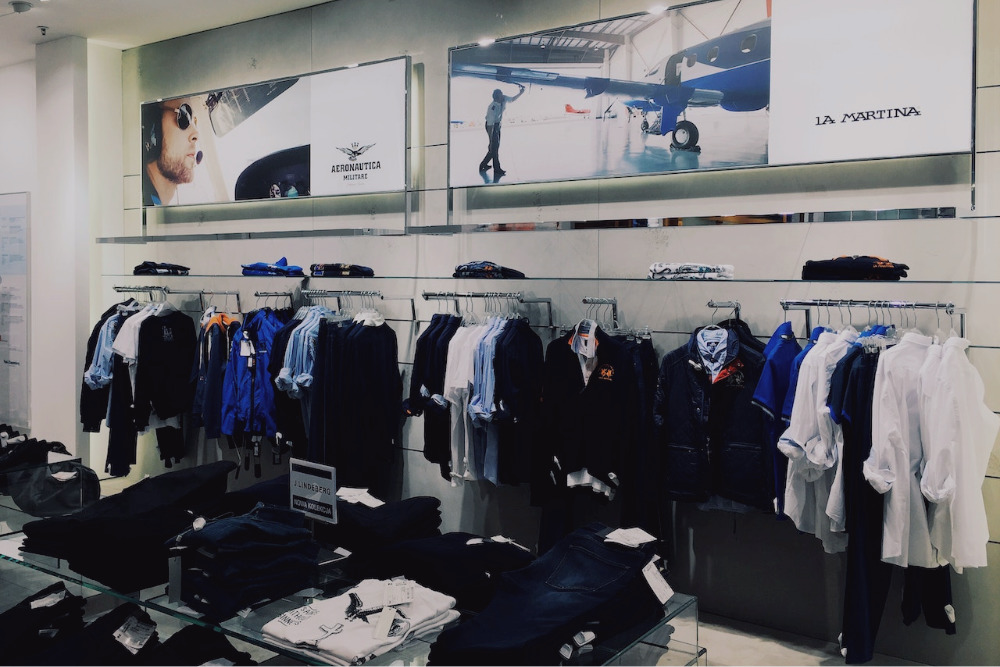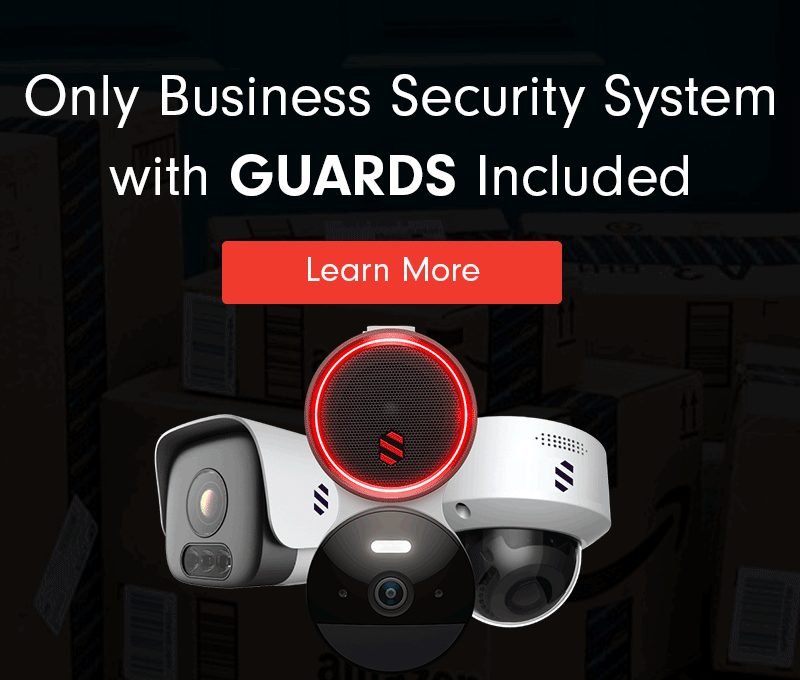Retail Store Anti-Theft Devices

After a 2.9% drop in 2020 because of the pandemic, retail sales bounced back in a big way. Worldwide sales were $27.34 trillion in 2022, and this may grow to $31.27 trillion in 2025. Unfortunately for store owners, shoplifting statistics reveal that retail theft is also booming. According to the National Retail Federation, retail shrink—including theft, gift card fraud, and inventory mismanagement—represented losses of $94.5 billion in 2021, about 1.4% of industry sales. However, business owners aren’t helpless. Retail store anti-theft devices are among the many ways to keep your inventory safe. But there are lots of different options to consider.
Retail Store Anti-Theft Solutions
There are a lot of options out there for a beleaguered retail business, ranging from low to high-tech. A mix of both is your best bet, and you’ll want to find a balance between protecting your store and inventory while making your customers feel welcome.
Keep everything under lock and key, for example, and a store starts to feel more like a bank vault. It’s cold and impersonal. Plus, it makes your well-meaning customers feel like criminals. That’s never a good strategy, especially in an age when the customer experience is often the key differentiator between choosing one business over another.
Try these retail store anti-theft devices and solutions instead.
Prepare a Theft Prevention Plan
Hope for the best, but prepare for the worst.
Every retail location should have a documented prevention plan that includes relevant phone numbers (e.g. managers and building security), procedures for dealing with incidents and suspected shoplifters, proactive steps to mitigate risks, a closing checklist (to ensure the location is secure at the end of the day), and more.
Without one, you’re just sitting there waiting for crime to happen—and it will happen—with no way to deal with it.
Employee Training
As part of your onboarding, provide each new employee with anti-theft training and tips. Teach them what to watch for, how to recognize suspicious behavior, and what common shoplifting techniques to watch for. These techniques include:
- Speed (enter, grab, and get out as fast as possible)
- Price tag swap
- Packaging switch (expensive items in less expensive packaging)
- Distraction (typically one or more individuals distract staff while others slip items into their clothing or bags)
- Concealment
- Return fraud (returning stolen items for cash or credit)
Simple steps like greeting customers as they enter, offering assistance to people browsing, or asking someone with an armful of items if they’d like to keep them up at the register until they’re ready to pay let would-be thieves know that someone is watching and invested in protecting the store.
Security Mirrors
In a perfect world, your retail location would have no blind spots or corners and a clean line of sight, making it easy for staff to keep an eye on things. That should be your goal, but it’s not always possible.
Security mirrors on walls and ceilings are affordable, easy to install, and effective at eliminating most blind spots when properly placed.
Security Signage
Another cheap and easy solution? Hang signs to inform customers that they’re being watched and that shoplifters will be prosecuted.
This won’t stop everyone, but it will stop some. The Loss Prevention Research Council discovered that 50% of shoplifters either leave immediately or don’t steal anything when surveillance signs are present in a retail store.
Display Cases
While you’ll want to avoid putting everything in a locked cabinet, display cases do serve a valuable purpose in the retail world.
With a locked display, customers can still see luxury items like jewelry, perfume, and watches and frequently stolen items like baby formula and razor blades. But the displays require an employee to unlock the case to retrieve these items. It’s hard to walk out without paying for something when staff know you have it.
Merchandising Security
Keep valuable, portable goods on a tight leash. Literally. Popular for electronics like smartphones and laptops, some retail store anti-theft devices physically anchor your inventory to the counter or shelf.
Customers can pick up and test them, but they’re attached via retractable cable to their display stand. These come in a wide variety of sizes and configurations. No matter what you sell, there’s an option that should work for you.
Electronic Article Surveillance
These are the stalwarts of retail anti-theft solutions. Electronic article surveillance (EAS) devices include:
- Tags – popular with clothing retailers, this category also includes ink tags that burst when tampered with, destroying the garment
- Labels – stickers that can be attached to virtually anything
- Safers – clear lockboxes that contain the item and are opened at the register
- Quad Wraps – great for large or oddly shaped items
- Collars and Caps – wraps around the neck or top of a container, these can be used for expensive bottles of liquor, tins of baby formula, and more
Unless removed or deactivated, these gadgets trigger an alarm if and when someone walks out with one.
Of the four main types of EAS devices—electromagnetic, acousto-magnetic, RFID, and microwave—RFID (radio frequency identification) tags are most popular in the retail sector. Most of these work in collaboration with radio frequency antennas that customers must walk through/by on their way out. The mere presence of these antennas—aka pedestals—is a powerful crime deterrent.
There are many tools available online to help shoplifters remove or deactivate anti-theft devices. The best protection against these is vigilance. That said, you can purchase tech tools meant to combat them, such as the Apparelguard device that detects magnets in changing rooms. Invest as necessary.
Security Cameras
Smile, you’re on camera! Shop owners have long used video cameras to watch over retail floors. Not only do they deter would-be thieves, but also the footage they capture is invaluable in the event of a theft or break-in.
CCTV systems are still widely used, but there are now much stronger options available to retailers. Modern retail security monitoring systems can use powerful software and artificial intelligence to prevent crime. Video analytics can identify suspicious behavior and bring it to the attention of staff or a remote monitoring service. Some systems employ facial recognition software that can identify known thieves the moment they walk into the store.
Cameras are the unblinking and unsleeping eye that safeguards your inventory when no one else is looking.
After-Hours Anti-Theft Protection
Your staff and anti-theft devices like EAS tags protect during business hours, but security shouldn’t stop when you close up for the day. After hours, retail locations should have comprehensive security systems that include alarms for unauthorized access, motion detectors, and flood lights inside and out.
But that’s not all. When your employees go home for the day, retail video surveillance takes the night watch.
Deep Sentinel provides a robust after-hours retail security solution, combining next-gen security cameras with AI and LiveSentinel surveillance guards. Proactive intervention via motion detection, live footage, 2-way audio, and high-decibel sirens stops thieves before they gain access to your store. And if necessary, Deep Sentinel notifies the police of a verified crime in progress in 30 seconds or less.
That’s loss prevention for the 21st century.
Need a Solution that Prevents Crime?
Deep Sentinel is the only security technology that delivers the experience of a personal guard on every customer’s home and business. Visit deepsentinel.com/business or call 833-983-6006

